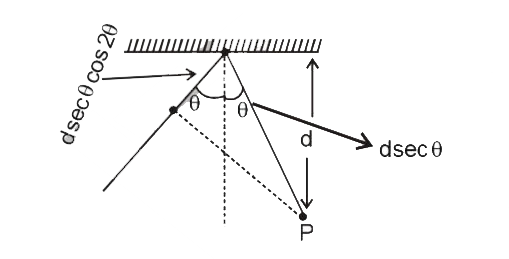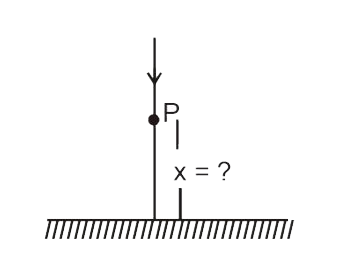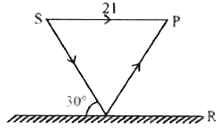Find the value of for which a maxima is obtained at P.

For maxima at P,
Path difference between direct & reflected ray
Topper's Solved these Questions
- BOOK - MOTIONCHAPTER - WAVE OPTICS EXERCISE - EXERCISE - 1 (Objective Problems | JEE Main) Section A - Interference Problems + Wavefronts & Hugens Principle9videos
WAVE OPTICS
- BOOK - MOTIONCHAPTER - WAVE OPTICS EXERCISE - EXERCISE - 1 (Objective Problems | JEE Main) Section B - YDSE Experiment8videos
WAVE OPTICS
- BOOK - MOTIONCHAPTER - WAVE MOTION EXERCISE - Exercise - 3 Section - B (Previous Years Problems)7videos
WAVE MOTION
- BOOK - MOTIONCHAPTER - WAVESEXERCISE - EXERCISE -4 (Level -II) (previous year JEE Advanced)10videos
WAVES
Similar Questions
Find the minimum value of x for which a maxima is obtained at P.
 View Solution
View SolutionThe interference pattern is observed at P due to superimposition of two rays coming out from a source S as shown in the figure . The value of l for which maxima is obtained at P is (R is a perfect reflecting surface) : -
 View Solution
View Solution
Knowledge Check
- Question 1 - Select One
Interference pattern is observed at 'P' due to superimposition of two rays coming out from a source 'S' as shown in the figure. The value of '1' for which maxima is obtained at 'P' is : (R is perfect reflecting surface)
 A1=2nλ√3−1B1=(2n−)λ2(√3−1)C1=(2n−)λ√34(2−√3)D1=(2n−)λ√3−1
A1=2nλ√3−1B1=(2n−)λ2(√3−1)C1=(2n−)λ√34(2−√3)D1=(2n−)λ√3−1
Find the value of secθsinθ
View SolutionFind the values of θ, for which cos3θ+sin3θ+(2sin2θ−3)(sinθ−cosθ) is always positive.
View SolutionFind the values of θ which satisfy rsinθ=3 and r=4(1+sinθ),0≤θ≤2π
View SolutionFind the values of θ , for which cos3θ+sin3θ+(2sin2θ−3) (sinθ−cosθ) is always positive
View SolutionFind the general values of θ which satisfies the equation tanθ=−1andcosθ=1√2
View SolutionFind the value of θ, which satisfy 3−2cosθ−4sinθ−cos2θ+sin2θ=0.
View SolutionFind the value of θ if
sec2θ+tan2θ=1View Solution

